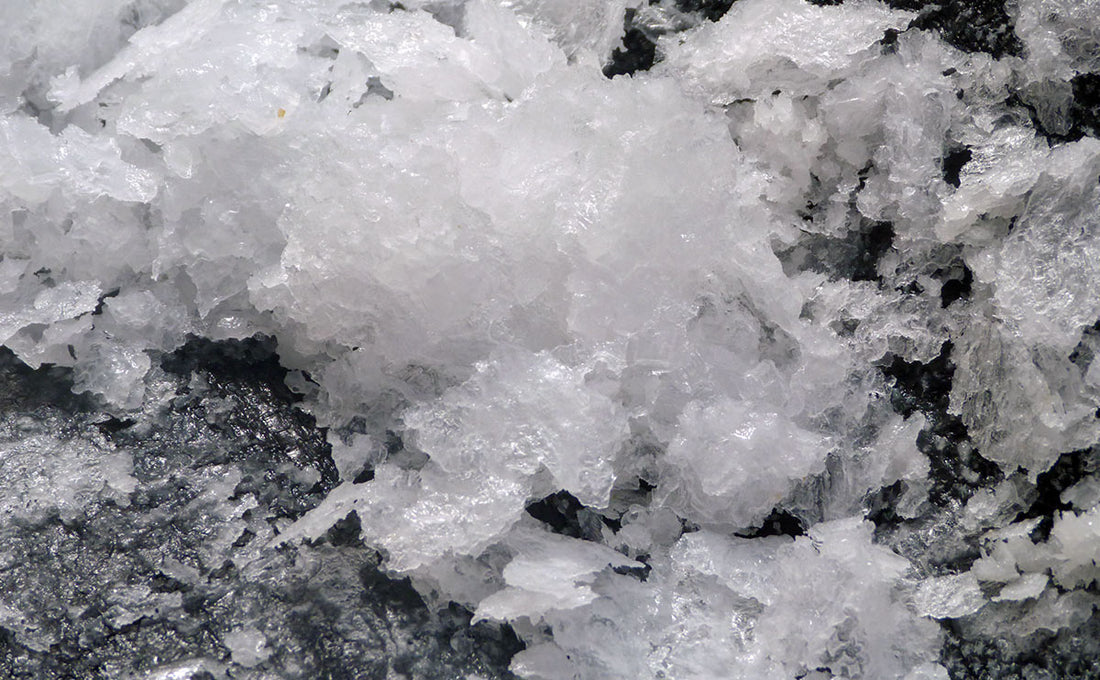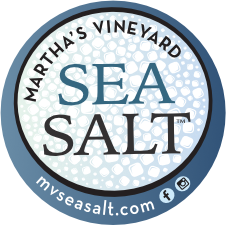
Boston Herald, Local Flavor
Martha’s Vineyard farmers harvest sea salt
KERRY J. BYRNE
Published: June 19, 2013
It’s a sunny, gentle mid-June day on Martha’s Vineyard and Heidi Feldman is showing off Down Island Farm, her idyllic little corner of this postcard-picture summer resort. Rhode Island Red and black-and-white Plymouth Rock hens scatter around the yard. There are three goats, peacocks, a garden of edible flowers that serves local restaurants, 100,000 honeybees and even a miniature horse named Speedy, who walks with us around the farm on a leash, like a very large family dog.
It’s all hidden amid sandy scrub oak down a nearly undrivable dirt road in Tisbury, just south of the bustling Vineyard Haven port.
But something unique is happening here. Feldman is harvesting one of the most abundant minerals in the world, one that literally surrounds Martha’s Vineyard: sea salt, dried from ocean water collected on the island’s largely remote south coast.
Martha’s Vineyard Sea Salt (www.mvseasalt.com) debuted two weeks ago. Feldman believes it’s the island’s first salt works in nearly 200 years.
“We don’t have great soil for farming, so we started looking at other ideas,” said Feldman, who moved here from Jamaica Plain with her husband, Curtis Friedman, in 2000.
The idea they stumbled upon is so simple it’s genius: Salt is abundant, easily produced and ubiquitous in our food. There is a huge potential market for all-natural sea salt with the romantic Martha’s Vineyard “brand” in an era when chefs and diners are committed to local sourcing — and willing to pay big bucks for it.
Picture upscale restaurants and trendy gastropubs touting local seafood “finished with a dash of Martha’s Vineyard Sea Salt”; New England-themed gift baskets filled with muslin salt bags; local breads with sea salt baked into the top; or private-label Martha’s Vineyard sea salt sold by supermarkets at a premium price.
The salt crystals are very fine and the flavor is intensely sharp, almost acidic. A little goes a long way.
“A finishing salt,” said Feldman, as she hawked it to inquisitive customers Saturday at the West Tisbury farmers market, next to the town’s 1859 Grange Hall.
Martha’s Vineyard Sea Salt is not for cooking. Instead, it’s meant to add a final dash of flavor. It’s available in 3-ounce paper sacks and 2-ounce paper-and-muslin packages, both for $13, and at $4 in “The Traveler” — a small glass jar (.40 oz.) not much bigger than a thimble that salt-aholics can stash in their pocket and bring to a cookout or favorite restaurant, for a fix whenever they need it.
The salt is now dried in a short, squat hoop house. It takes just four gallons of ocean water to produce a pound of salt. But big things are in the works: Friedman, a carpenter, is building an 80-foot-long evaporation house that will yield 150 pounds of sea salt in every five-week cycle.
Martha’s Vineyard Sea Salt is available, for the moment anyway, only on island: at farmers markets and at gourmet shops such as Black Sheep (Edgartown) and Not Your Sugar Mamas (Edgartown, Vineyard Haven).
Feldman’s mail-order business should be up and running in a few weeks, and she’s already working on flavored salts that she’ll release next year: smoked cherry, smoked sassafras and a blueberry honey salt for desserts, all made with native island ingredients.
Heidi Feldman’s ‘To Die For’ Grilled Asparagus
1 large bunch medium to thick asparagus
1 T. olive oil
1 squeeze of lemon juice
1 T. Martha’s Vineyard Sea Salt
Heat grill to medium-high. Rinse asparagus and snap off brittle bottom ends. Towel dry. Roll asparagus in olive oil then place gently crosswise on grill. Grill 5 to 10 minutes, turning a couple of times. Place on serving platter. Squeeze with lemon juice and sprinkle with sea salt. Serves 4.
— kerry.byrne@bostonherald.com
ADD A DASH: Martha’s Vineyard Sea Salt will be marketed to restaurants and foodies.
Copyright (c) 2013 Boston Herald
